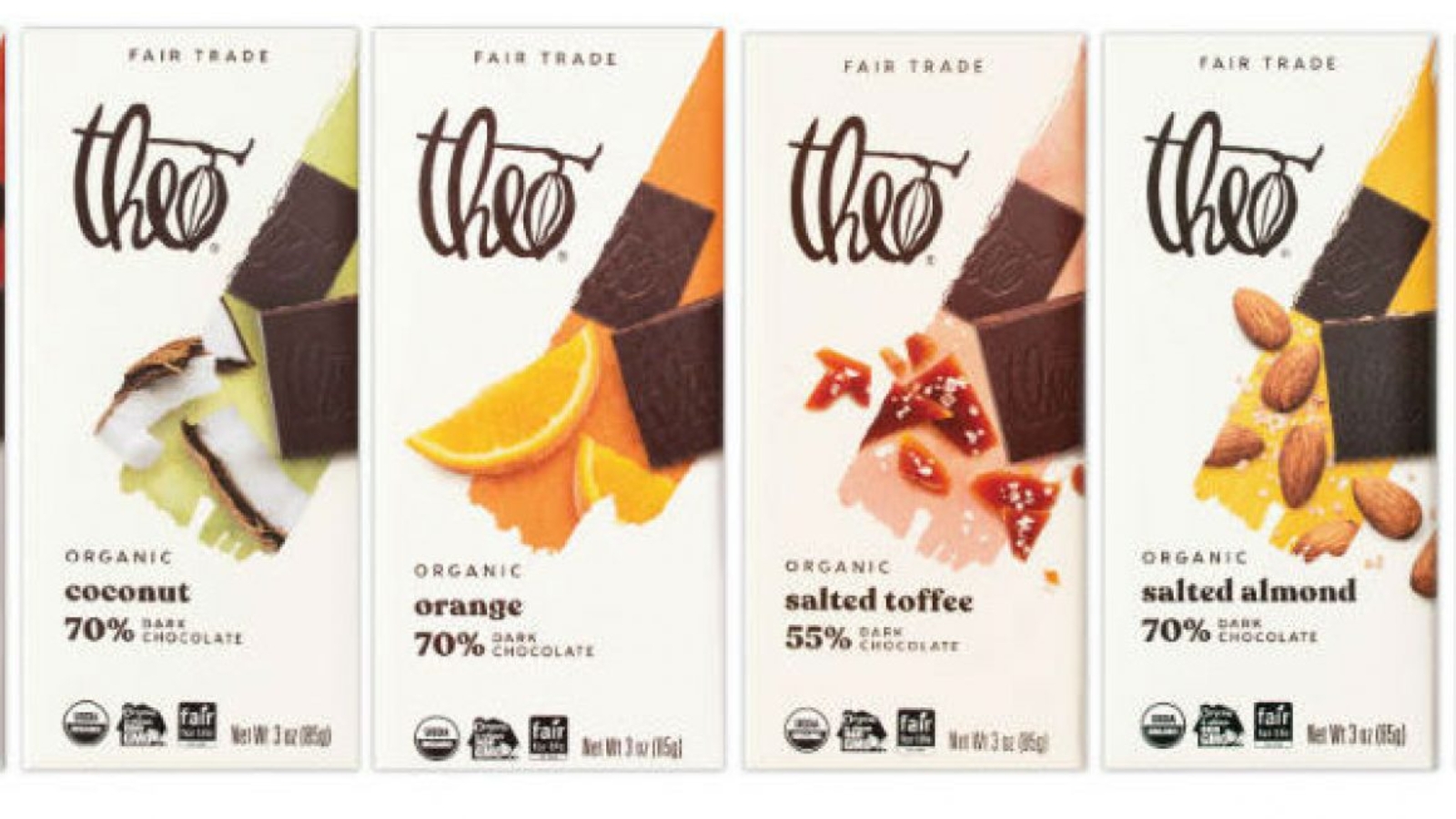For this study, Theo Chocolate wanted to decrease fossil fuel use while maintaining shelf life and improving their current waste stream by switching to plant based packaging. Specifically, this case study looked at switching from a metallized fossil-based film to a plant based film for their chocolate/candy packaging.
To measure the environmental benefits, Theo Chocolate applied and was accepted into a Packaging Climate Optimization-a partnership between Climate Collaborative and Trayak. This project connects Climate Collaborative-committed companies to Trayak, who uses a cost-effective, streamlined LCA to benchmark existing packaging and develop climate-improved alternatives.
All three organizations worked together to collect packaging system information and perform the analysis with Trayak’s LCA tool, EcoImpact-COMPASS (Comparative Packaging Assessment). Switching to a plant-based film showed improvements in freshwater ecotoxicity, GHG emissions, and fossil fuel use. However, the potential switch showed slight increases in water use, mineral resource use, and packaging to product weight. In addition to these indicators, Theo Chocolate will need to evaluate the plant-based packaging to ensure damage rate, barrier properties, and cost are not negatively impacted.
Theo Chocolate engaged in this case study because of their commitment to making the world a better place. They are setting high expectations for themselves as well as other companies in the industry.
End of Life – A main driver in this switch is considering the end of life of Theo Chocolates’ packaging. This specific plant-based film is home compostable and marine degradable.
Carbon Footprint – While all the LCA indicators are important to Theo Chocolate, their carbon footprint is of greatest concern. In switching to a plant-based film, Theo Chocolate reduces their carbon footprint because the material GHG emissions impact of the plant-based film is lower. Theo Chocolate is also reducing their company’s reliance on fossil fuel-based plastics.
Performance Considerations – Not all materials perform the same, so it is important for Theo Chocolate to perform the appropriate tests on the new plant-based film to ensure the package meets shelf life requirements.
REDUCE FOSSIL FUEL CONSUMPTION
by 23.9%. If Theo Chocolate switches to a plant based film to annually deliver 2.8 million units, fossil fuel consumption could be reduced by 148,634MJ—equivalent to 3 average U.S. homes powered for one year!
REDUCE GREENHOUSE GAS EMISSIONS
by 1.95% (1 ton of CO2 eq annually). This is the same amount of carbon that is sequestered by 23 tree seedlings grown for 10 years!
REDUCE FRESHWATER ECOTOXICITY
by 14.8%. Making this packaging change for an annual volume of 2.8 million units will reduce freshwater ecotoxicity by 74,419 Comparative Toxic Unit ecosystems. Freshwater ecotoxicity is the quantity of environmental emissions resulting in aquatic toxic impacts released throughout the lifecycle.
A SWITCH TO PLANT-BASED PACKAGING TO REDUCE CLIMATE IMPACT
Improving Theo Chocolate’s Packaging Impact
Theo Chocolate is an enthusiastic and mission-driven brand integrating sustainability into every aspect of their company. They are making life sweeter far beyond their chocolate by investing in the lives of their cocoa farmers in Peru and Eastern Congo. Theo Chocolate sets high standards for social and environmental responsibility—that is why all of their ingredients are third party verified. Theo Chocolate is fair trade certified, USDA Organic, STAR-K Kosher certified, and do not use GMOs in their products. Now they are pushing the bar even higher—Theo Chocolate is working towards bringing their products to market in 100% plant-based packaging.
KEY TAKEAWAYS
Average U.S. homes can be powered in one year with these savings Tree seedlings grown for ten years Reduction in freshwater ecotoxicity

